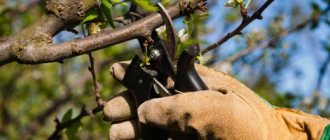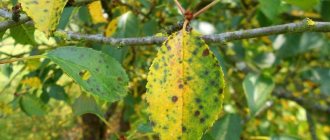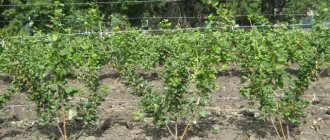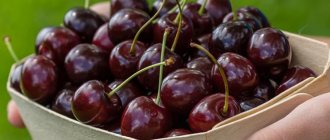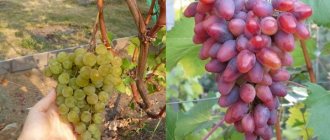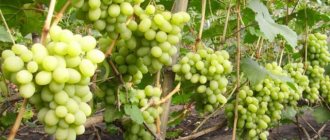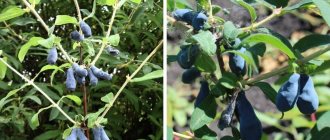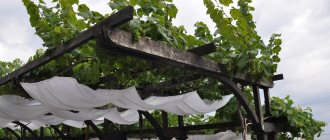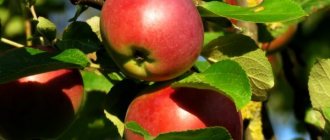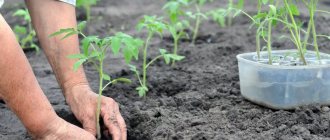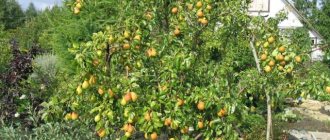Today, in the summer cottages and gardens of our compatriots, many varieties of fruit trees grow. One of the most favorite types is cherry. A large number of varieties have been bred through selection. Generous cherries are very popular.
This is a bush plant. It has a lot of advantages. Due to its unpretentiousness, durability, and high yield, the presented variety is grown today by many gardeners. Features of caring for a fruit plant should be considered in detail before planting it.
History of creation
The Generous Cherry (photo below) was bred through selective breeding. This is a hybrid of common and steppe cherries. Through the selection of seedlings, as well as through free (random) pollination of the Ideal variety, the presented variety appeared. Other species also participated in the pollination process. Among them was steppe cherry.
The Ideal cherry seedlings sent to the breeding organization were annual plants. The Shchedraya cherry variety was recognized by breeders who worked at the Sverdlovsk horticultural station.
The spread of the variety in the gardens and summer cottages of our compatriots occurred back in 1959. Zoning took place in such regions as the Volga region, West Siberian and Ural regions. This variety has taken root well. Nowadays it can be found even in gardens of neighboring countries.
Cherry appearance
Outwardly, Shchedraya does not stand out in any way: its advantages are hidden in frost resistance and endurance. An ordinary tree with a spreading crown strewn with small cherry-colored berries.
The trees of this variety will not be tall, so some are suitable for cultivation in the private sector and in summer cottages. The orientation of the shoots is vertical, the buds have a characteristic sharp shape and are small. The leaves are bright green, rounded, with small teeth along the contour. 3-4 buds grow in one inflorescence, the petals are white, freely placed.
The cherries are small, round, dark wine color, weighing up to 5 grams. When ripe, they do not crack and retain their shape. The pulp is juicy, sweet, without cloying, slightly sour. The pit easily lags behind the core. The tail is long, not thick. One berry contains:
- acids – about 1.5%;
- sugar – up to 7%;
- dry components – 12.2%.
Read also: Cherry: description and photo of medium-ripening varieties
100 grams of cherries contain up to 13 milligrams of ascorbic acid, a lot (318 milligrams) of vitamin P. The fruits are resistant to shedding.
Bush
Shchedraya cherry (variety description, photos will be presented below), as already mentioned, is a bush plant. It grows up to 2 m in height. The shape of the bush is wide-round. Its shoots are raised upward. The density and foliage of the plant is average.
The cone-shaped kidney reaches a size of 4 mm. She weakly strays away from her escape. The leaves have an obovate, elongated shape. They have a shiny surface and dark green color.
Inflorescences consist of 3-4 flowers. Their petals are white. They are freely spaced from each other. The presented cherry bears fruit on annual growth, as well as bouquet branches. Due to the fact that the bush is low, harvesting is quick and easy.
Features of growing steppe cherries Shchedraya
The unpretentious steppe cherry can grow and bear fruit with minimal care. To increase productivity, you need to pay a little more attention to it, and also take into account varietal and species characteristics.
Landing
In the regions where Shchedra is grown, autumn planting is unacceptable due to the risk of freezing of the young tree. When planting in the spring, you need to take into account the early awakening of cherries in the spring: seedlings purchased at this time may already come out of dormancy, which will negatively affect the development of plants. It is better to buy planting material in the fall and dig it in until spring. Low-growing bushes are planted according to a 2x2–3 m pattern.
Steppe cherry does not tolerate shade. It is better to choose a place on a slope from the south-west to the north-west direction. You should not be tempted by the southern slopes; in the middle and northern latitudes in winter they experience sharp temperature changes, which cause bark burns and the death of flower buds. If the tree is placed on a flat area, it is better to plant it on a mound 60–70 cm high to avoid the root collar becoming warm. In lowlands where moisture accumulates, Generous should not be planted. The further north the site is located, the more carefully the requirements for choosing a site must be observed.
To protect the root collar from getting too warm, in flat areas it is better to plant Shchedraya cherries on mounds
The variety is undemanding to soil quality; it can successfully grow and bear fruit even on poor soils, but it develops better on fertile ones. The main requirement for soil is an acidity close to neutral or slightly alkaline. Otherwise, the growing conditions and planting process are no different compared to ordinary cherries.
Plant care
Proper care of cherries will increase the life of the tree and help increase productivity.
Trimming
The Generous crown can be formed in a multi-stemmed form. And also for low-growing cherries, there is an option for a tierless formation with a low trunk and ten to twelve skeletal branches directed in different directions and located at a distance of 8–10 cm from each other. Formation is carried out over 3–4 years. Sanitary pruning is carried out regularly, removing diseased, shriveled and damaged branches. Thinning is carried out as necessary, taking into account that a slight thickening will not harm the plants. It is also necessary to regularly remove root shoots, which are very actively formed in Shchedra.
When annual growth is reduced to 20 cm, and this usually happens 4–5 years after the start of fruiting, begin rejuvenating pruning. In bush-like cherries that bear fruit on annual growths, the growth bud at the top of the shoot may be the only one, therefore, when the tree is rejuvenated, the shoots are shortened and transferred to a stronger branch. If you shorten a branch, hoping that dormant growth buds will awaken on it, the shoot may dry out.
During anti-aging pruning of the Shchedraya cherry, the shoots are shortened and transferred to a side branch
Watering and fertilizing
The drought-resistant Shchedraya needs watering only when there is a critical lack of moisture. In severe drought, plants need to be watered after the formation of the ovary and during the formation of flower buds (late July), from which the crop will be formed in the next season. Autumn water-recharging watering is not carried out, as it will contribute to the damping off of the root collar in the autumn-winter period.
Plants, like ordinary cherries, are fed with nitrogen-containing nutrients in early spring, and with potassium and phosphorus in summer (during the formation and growth of the ovary). On depleted soils in the spring, humus or compost can be applied under adult plants at the rate of 8–10 kg/m2, on soils with an average level of fertility - 4–6 kg/m2.
Fruit
Generous cherry, reviews of which are provided by experienced summer residents and gardeners, produces juicy, rich red fruits. Their weight reaches 4 g. The shape of the cherries is round. Their width is about 18 mm, and their height is 17 mm. The pulp of the fruit is dark red in color. It is characterized by medium density and red juice.
The berries grow on long stalks (up to 37 mm). Inside the cherries there is a stone weighing 0.27 g. It occupies 7.7% of the total weight of the fruit. The stone can be easily separated from the pulp. The berries are very attractive in appearance. According to surveyed gardeners, this indicator is at the level of 4.6 points (on a five-point system).
The pulp has a sweet and sour taste. According to the tasting assessment, the berries received 4.4 points. When the cherry is torn from the stalk, no juice appears. The berries do not crack in rainy weather. They contain a high content of vitamins C and P. They are used to prepare compotes, juices, make jam or eat them fresh.
Plant morphology
To successfully grow cherries, you need to know the structural features of the crop. The morphology for all varieties of this plant is the same, there are only slight deviations, namely in the Maksimovskaya cherry variety:
- Cherry roots are a rod system. Its main root reaches a depth of 1.5 to 2.5 meters, so the plant is not afraid of lack of moisture. The adventitious root shoots are located throughout the rod, the closest to the surface are at a depth of 10-20 cm. When loosening, this must be taken into account so as not to damage them;
- aerial part - formed in the form of a tree with one main trunk or a shrub with several perennial shoots;
- leaves are petiolate, rich green in color, serrated edges;
- Maksimovskaya fruits are round, shiny berries that consist of a seed covered with a shell of juicy pulp; the larger the diameter of the berry, the easier the seeds are separated when peeling. The skin color is red.
Three ways to neatly hem jeans - you can do it even without a sewing machine
Reviews from gardeners
The Shchedraya cherry variety, reviews of which are provided by summer residents in various sources, is characterized by flowering in the medium term. This process begins in the last ten days of May. The fruits ripen quite late and not at the same time.
Fruiting, according to reviews from gardeners, occurs in the 3rd or 4th year of growth. The productivity of the variety is high. The bushes bear fruit every year. With proper care, cherries can live up to 30 years. The variety is self-fertile, but the presence of other varieties of cherries on the site is welcome.
Cherry survives winter well and is not afraid of frost. The flowers are resistant to sudden spring frosts. Also, the bush can go without watering for a long time. The variety is also considered pest resistant. Rarely affected by cherry aphids and sawfly. It has average resistance to moniliosis and coccomycosis.
The presented variety can be grown both as an industrial and as an amateur crop. This is a valuable breeding resource. It is suitable for intensive cultivation.
How to protect cherries from pests and diseases
Generous cherry is affected by coccomycosis and moniliosis to a moderate degree. Common pests are aphids and slimy sawflies.
Pests and diseases of cherries and ways to combat them - table
| Name | Description | How to fight |
| Aphid | Small soft insects on leaves | If a pest is detected, spray the bushes with Decis |
| Slimy sawfly | Slime-covered larvae that turn leaves into transparent mesh | |
| Coccomycosis | Leaves turn yellow and fall off prematurely | Spray the bushes with Skor three times:
|
| Moniliosis | The fruits are rotting |
Cherry pests and diseases - photo gallery
Aphids suck juices from leaves
Slimy sawfly larvae feed on leaf pulp
An adult sawfly looks like a small wasp
Coccomycosis causes premature yellowing of leaves
Moniliosis develops especially rapidly in rainy summers
Advantages and disadvantages
Shchedraya cherry, a variety description of which is provided by summer residents, has many advantages. However, there are also some disadvantages. The harvest has to be done in several passes. The fruits ripen unevenly. This is the main drawback, which does not frighten gardeners at all. The variety has many more positive qualities.
This variety is famous for its extraordinary productivity. From one adult bush you can collect up to 15 kg of cherries. This explains the suitability of the variety for industrial cultivation of fruits. Some gardeners claim that the fruits ripen until September. Therefore, Shchedraya is a late variety. To increase the yield, you can plant trees such as Subbotinskaya, Volevka, Maksimovskaya and other varieties of cherries next to this bush.
Experienced gardeners claim that Shchedraya can withstand temperatures down to -45ºC. In this case, no damage to the bark or shoots is observed. It is precisely because of this feature that the presented variety is recommended to be planted in the northern regions.
Peculiarities
“Shchedraya” cherry has some features that distinguish it from many common varieties. Most of them relate to the advantages of the variety. Among them the following can be noted:
- winter hardiness;
- disease resistance;
- pollinators;
- unpretentiousness;
- ripening period and yield;
- transportability.
All gardeners especially note the high frost resistance of cherries. It is able to withstand frosts above – 35C. Moreover, the variety can withstand not only long winters with severe frosts, but also spring frosts, which are always dangerous for plants awakening after the winter period. Low temperatures in the air and soil do not damage either the trunk with shoots or the root system. Find out why cherry leaves don't bloom at this link.
The kidneys are especially cold-resistant. Even if frosts occur during the flowering period, which has a very negative effect on fruiting, the “Generous” cherry will always produce a good harvest.
Unfortunately, the resistance of this cherry to fungal diseases is not very high. The tree can be affected by coccomycosis and moniliosis. These dangerous pathologies affect the trunk, branches, leaves and fruits of the plant.
Moniliosis is characterized by the appearance of a gray coating similar to moss on the branches and leaves. If the plant is not treated, then cracks begin to appear on the bark, the leaves quickly fall off, and the berries rot. With coccomycosis, red spots appear on the upper parts of the leaves. Subsequently, all the foliage falls off, the berries dry out and the plant dies. “Shchedraya” cherry is a self-fertile variety, but to increase the yield on the site, it is recommended to plant cherry trees, which will serve as additional pollinators. The following varieties are well suited for this purpose:
The flowering period of these plants completely coincides.
“Shchedraya” is a high-yielding variety and up to 18 kg of berries can be harvested from one tree. The tree enters the fruiting phase 3-4 years after planting. Flowering begins at the end of May. Bouquet inflorescences with 3-4 medium-sized flowers are formed on the branches. The harvest can be harvested from the end of August. Thanks to the dense pulp, the berries of this cherry tolerate transportation well over long distances, provided that the rules for transporting fruits are followed.
Preparing for landing
The description of the Shchedraya cherry variety allows us to draw conclusions about the advisability of planting it on your site. If the gardener decides to grow the presented bush, he needs to consider the features of this process.
The best time for planting is spring. However, the soil should be prepared in the fall. The future planting site must be dug up and limed. A month later, organic fertilizers are added to the soil. Slurry is suitable for this. It is diluted in water in a ratio of 1:2. You should also be sure to apply mineral fertilizers. This will require 50 g of potassium sulfate and 100 g of superphosphates. This calculation is performed on 1 m² of plot area.
In the fall, a planting hole is also prepared. Its depth should be 50 cm and width 70 cm.
The soil for planting must be dry. The best presented variety grows on sandy loam soils. Cherries love light, so choose a sunny place for planting, preferably on a hill. On the north side it is necessary to protect the bush from strong winds.
Growing
Cherry fruiting directly depends on the choice of location, proper planting of the seedling and further care. Cherries should not be planted in low-lying and shady areas, as the lack of sunlight can slow down the development of the tree and reduce yield.
Climatic conditions
The variety is very resistant to low temperatures and has a good ability to acclimatize, so it can be planted throughout the middle zone, the central black earth region, as well as in the Urals, Siberia and the Far East. Read about varieties for the Urals. Spring frosts can reduce the number of ovaries, but abundant flowering will compensate for these losses and the number of berries will still be large.
The soil
Cherry is considered unpretentious to soil quality, however, light and loose sandy loam soils are best suited for it. The planting site should be located on a hill to protect the tree from stagnation of water during heavy rainfall and melting snow. This can damage the root system. The landing site should be prepared in advance. For spring planting, which is recommended for this cherry, the soil must be prepared in the fall. Acidic soils are completely unsuitable for the plant, so the area for planting cherries should be treated with neutralizing components. For this purpose, you can use slaked lime or chalk. During the liming process, the soil must be thoroughly dug up. After two to three weeks, mineral or organic fertilizers can be added to the soil. This can be slurry, which is a mixture of manure and water in a ratio of 1: 2, compost or a mixture of sand and peat in an amount of 12-15 kg per 1 m2.
Landing
The Schedraya cherry variety is considered undemanding to the soil. However, to increase productivity, it is necessary to properly fertilize the soil immediately before planting. The process is carried out in the spring. It is necessary to lay special soil at the bottom of the prepared hole.
To do this, the top layer of soil is mixed with manure. 30 g of superphosphate and 15 g of potassium chloride are also added here. You can also add 1 kg of wood ash. The mixture is poured into the pit. A seedling is placed on the formed mound. It needs to be buried tightly.
The root collar should remain on the surface. Generous does not tolerate deep planting. A hole with high sides is built around the cherry. It is watered. After thoroughly compacting the earth, you need to pour about 4 buckets of water into it. The planting site is mulched with organic fertilizers or peat.
Bush care
Shchedraya cherry, the variety description of which was discussed in detail above, requires proper care after planting. In the first two years, the bush requires only watering, removing weeds and loosening the soil.
In autumn, the bush needs to be prepared for winter. To do this, dig up the soil around it to a depth of 10 cm. This must be done carefully so as not to damage the roots.
When the cherry reaches the age of 3 years, the first portion of fertilizer should be applied in the spring. This is done immediately after the snow thaws. In this case, nitrogen fertilizing is suitable. In the fall, it will be possible to add potassium sulfate and superphosphate to the soil.
During the fruiting period, the amount of fertilizer should be increased. After flowering, an additional portion of fertilizing should be added. Organic fertilizers should be applied once every two years. Liming is also required once every five years.
A young plant needs frequent watering. As the soil dries, you should pour 3-4 liters of water into the hole under the bush. When the bush begins to bear fruit, the frequency of watering is reduced. Only 3 such procedures will be required per year. The first watering is carried out after flowering, the second - during the period of fruit ripening. A third watering will be required in October. If the weather is dry, this procedure is performed more often. In this case, you should pour about 5 buckets of water into the soil.
Description and characteristics of the variety
This cherry variety lives up to its name. “Generous” always brings a good harvest. Fruiting is regular and the variety has almost no empty periods. Fruit ripening does not occur simultaneously, so harvesting may take some time. Since the berries adhere well to the stalk, the crop practically does not fall off even in strong winds.
“Generous” is suitable for inexperienced gardeners, since even without proper care and fertilizing you can get a bountiful harvest.
Tree
Shchedraya and Shokoladnitsa cherries are bush varieties. The plant reaches a height of about two meters. The bush is spreading and forms a dense crown of a round shape. The brown bark is smooth and even. The leaves are dark green, oblong in shape, with slightly jagged edges.
The fruits of this variety are smooth and large.
The color is dark red, rich, and the flesh is dense, sweet and sour taste with a classic cherry aroma. The berries are practically not subject to cracking and damage, so they can be stored longer than fruits of other varieties. If ordinary cherries are stored for no more than 4 days, then the fruits of the “Generous” cherry can be stored for up to 8 days.
- organic acids – 1.5%;
- sugar – 6.8%;
- ascorbic acid – 13.5 mg;
- vitamin P – up to 320 mg.
The berries can be eaten fresh or used for home canning. Thanks to its dense pulp, this cherry is perfect for freezing and long-term storage.
Bred by talented breeders - I. N. Gvozdyukova and S. V. Zhukov in 1959 at a horticultural station in Sverdlovsk. The hybrid is the result of crossing common and steppe cherries. Grown in the central, northeastern and northwestern regions.
Characteristics of Generous cherry:
- bush up to 2 m high, spreading, elongated leaves, bright green, shiny, white flowers, small, pointed buds,
- late-ripening, self-fertile, berries ripen in late summer - early autumn. It begins to bear fruit 3–4 years after planting. Duration of fruiting – up to 35 years,
- the fruits are round, dark red, weighing up to 5 g, slightly watery, do not fall off, crack when overripe, the taste is sweet and sour, the aroma is thick, the stone is large, and is easily separated from the pulp. Taster rating – 4 points,
- universal use - canning, freezing, drying, making compotes, adding to baked goods, eating fresh.
Shchedraya cherry has a number of positive qualities that distinguish it from other varieties. Among the advantages are noted:
- productivity. The indicator reaches 15 kg per bush per season,
- cold resistance. Tolerates temperatures down to -35 ... -47°C. Even if the cold snap occurred during flowering, the yield will be good,
- drought resistance. Growth and development do not stop with scanty rainfall,
The disadvantages include:
- uneven fruit ripening,
- susceptibility to diseases and pests.
Thanks to its high yield, resistance to frost and drought, unique taste and aroma, Shchedraya cherries have won their rightful place among other varieties.
The quality of berries and the period of fruiting are influenced by compliance with planting rules. Following the recommendations allows you to get an excellent harvest on time. The best time for planting is mid-April. The temperature ranges between 10 – 15°C and is most suitable for acclimatization.
Site selection
Despite the variety’s resistance to cold, a place that is as sheltered from northern winds as possible is allocated for it. Choose a site on a hill, this protects from excess moisture during heavy and frequent rains and when snow melts.
Cherry is not demanding on soil quality, but it performs best in light sandy loam soils. Prepare the ground in advance: carefully dig and lime.
A month later, organic and mineral fertilizers are added. A great option is a slurry solution. The method of preparing the product is simple: take two parts of water to one part of manure and mix. It is possible to use compost or a mixture of peat and sand (15 kg per 1 m2). Recommended for application: potassium sulfate and superphosphate (50 – 80 g per 1 m2).
For planting, dig a hole 45 cm deep and 85 cm in diameter. Top fertile soil mixed with compost in a 1:1 ratio, a small amount of ash and 20 g of potassium chloride are poured into it. The seedling is lowered, sprinkled, and compacted.
Make a hole around the bush and pour 3-4 buckets of water into it. Afterwards mulching is carried out with peat or compost. The further development of the seedling depends on its care.
Proper care guarantees a bountiful harvest and quality fruit. Cherry is unpretentious: a beginner can handle its care. In the first two years after rooting, weeds are removed, watered, and loosened.
Basic care for bushes older than two years includes the following procedures:
- Feeding. Cherries in their third year of life need spring fertilizing with nitrogen fertilizers, such as urea. In autumn there is a need for superphosphate and potassium sulfate. During the fruiting period, the volume of applied fertilizers is increased.
- Watering. Produce three times a year at the rate of 3 – 4 buckets per 1 m2. The first time - at the end of flowering, the second - during the ripening of the berries, the third - before the onset of cold weather. During dry summers, abundant watering is required: 5 – 6 buckets of water per 1 m2.
- Trimming. The procedure is performed annually before flowering. Remove weakened, diseased and damaged branches. The cut is treated with garden varnish. One-year-old branches do not need pruning. After 4–5 years, the crown is considered formed. An adult plant should have 10 to 15 branches. For mature cherries, pruning is done to maintain the shape of the crown. To avoid a decrease in yield, thickening should not be allowed. In addition to removing the branches, the root growth is cut off - it weakens the plant.
- Spraying. In order to prevent fungal and bacterial infections during the flowering period, plantings are treated with urea and copper sulfate.
To obtain a high-quality harvest, a set of measures for care, pruning and protection from pests and diseases is necessary.
Despite the fact that the unpretentious and productive variety has a high production rating and is also excellent for growing in amateur gardens, it was not possible to find reviews about it on gardening forums. For the southern regions, where there is a large selection of large-fruited cherries, Shchedraya is not of particular interest.
Trimming
Generous cherry requires proper pruning. In this case, its life expectancy reaches more than 3 decades. Pruning is performed annually. The crown of the bush is fully formed in 5 years. It should have about 10 or more main strong branches. Therefore, after the tree has formed, pruning is performed only for supporting purposes.
When the buds on the branches begin to swell, it will become clear which shoots should be removed. This procedure is best carried out in early spring. All diseased, dry or weak branches must be removed. The cut areas are treated with thick consistency garden pitch. Annual shoots are not pruned. The procedure must be carried out before the leaves appear.
Root shoots should also be removed. It takes a lot of energy from the plant. Increase in density should also be prevented. All branches that grow inside the bush should also be removed. This reduces the risk of diseases and increases productivity.
Pest Control
Generous cherry is resistant to pests. However, in some cases it can be affected by coccomycosis or moniliosis, cherry aphid or slimy sawfly. Most often this happens during cold, damp periods.
Affected leaves, berries and shoots should be removed and burned. After and before flowering, the bush should be treated with an aqueous solution of copper oxychloride. After the crop is harvested, you can spray it with 1% Bordeaux solution. At the same time, the soil under the bush should also be treated.
It is also recommended to periodically loosen the soil near the cherry tree and treat the plant with insecticides. Timely prevention and treatment help prevent the spread of diseases.
Having considered the features that the Shchedraya cherry has, every gardener will be able to plant and grow the presented variety on their site.
